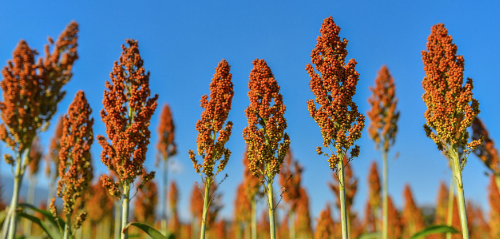
Senior Farm and Ranch Broadcaster, Ron Hays, is visiting with the Executive Director of the United Sorghum Checkoff, Norma Ritz Johnson, about adding value for sorghum producers.
Johnson said 2022 has been a tough year for sorghum producers.
“We absolutely have seen a dramatic decrease in yield,” Johnson said. “In fact, according to what USDA has pegged in their most recent report, that is 43 bushels per acre, which is just incredibly low.”
That 43 bushels per acre, Johnson said, is a low that has not been hit since 1964.
“Sorghum generally doesn’t require a lot of water and that is why it is generally planted in some of our more water-limited areas, and so naturally, those are some of the ones that are going to suffer first and maybe even longest in a drought situation,” Johnson said.
Of course, lower yields and production impact resources for the Sorghum Checkoff Program.
“We are still seeing pretty high prices, and basis jumps around depending on what region you are talking about, but we have got to have a crop to sell,” Johnson said. “Fortunately, we sell all of the sorghum that we grow and have for the past several years.”
The world wants sorghum, Johnson said, and there are many different uses for the crop. The sorghum industry, Johnson said, remains non-GMO, which has been valuable in creating more markets and revenue for sorghum producers.
“For the processors that are looking for that or the consumers that are looking for that, sorghum offers a solution as a non-GMO product in those markets,” Johnson said.
Sorghum is naturally gluten-free, Johnson said, which also helps with marketing.
“We are beginning to communicate on a much better level with consumers about the nutritional value of sorghum,” Johnson said. “We were fortunate to be able to being on board a registered and licensed dietitian last year and she has really helped us to talk on that consumer level about the nutritional value of sorghum.”
One serving of sorghum, Johnson said, can achieve 30 percent of the daily protein requirement and around 30 percent of the daily fiber requirement.
“It is astronomical, the daily requirement that is fulfilled in your magnesium and other trace nutritional factors,” Johnson said.
With increasing conversations about agriculture and food’s role in health, Johnson said sorghum has a particular role to play in that area.
“The world is discovering sorghum,” Johnson said. “We are beginning to see that exponential growth, and it is a good problem to have that we can’t always keep up with it.”
As the need for more sorghum production increases, Johnson said the checkoff is focusing on communicating with producers about the role sorghum can play in their cropping systems.
“We have long known sorghum was sustainable,” Johnson said. “Now, it is a matter of documenting the case for that and also coming up with sustainable production practices that offer more value to the producer.”
The Sorghum Checkoff is investing in research, Johnson said, that is aimed at solving sorghum production challenges.
“For instance, we just launched a 1.6-million-dollar five-year project that is going to look at the architecture of the sorghum plant from root to tip,” Johnson said. “Physiology of the sorghum plant is something that has not been looked at in modern history. So, this is almost a first-of-its-kind effort.”















